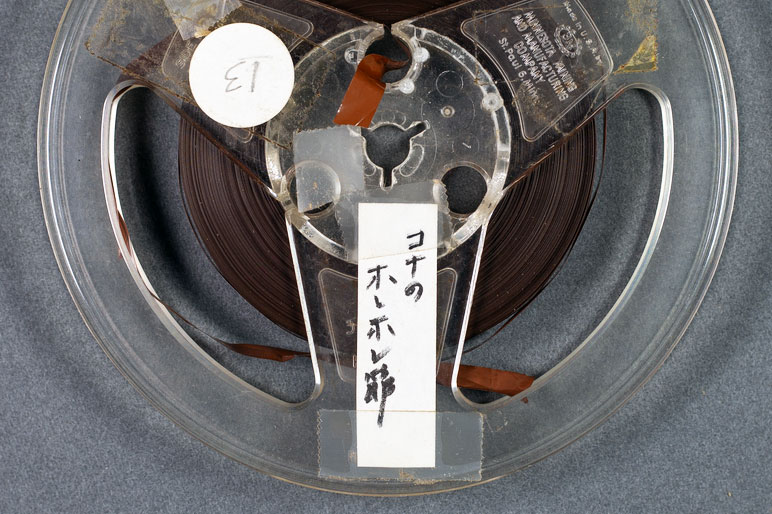Today, the Library of Congress’ National Recording Preservation Board (NRPB) announced the selection of the Harry Urata Audio Recordings, a collection held in the Ralph Rinzler Folklife Archives and Collections at the Center for Folklife and Cultural Heritage, to the National Recording Registry.
The NRPB selects just twenty-five recordings every year to add to the registry; the Urata collection joins 675 recordings on the registry showcasing the richness of the nation’s audio heritage. Also among the 2025 inductees are recordings by Miles Davis, Elton John, Amy Winehouse, and Nimrod Workman—an NEA National Heritage Fellow and a frequent Smithsonian Folklife Festival performer.
The Urata audio recordings include twenty open-reel tapes and cassettes depicting the tradition of holehole bushi, folksongs by Japanese immigrant workers on Hawaiian sugar plantations in the late nineteenth and early twentieth centuries. The recordings, primarily in Japanese, also include oral histories with tradition bearers.

Harry Urata was born in 1917 in Hawai‘i. After the Japanese attack on the U.S. naval base in Pearl Harbor, Hawai‘i, Urata, a Japanese American, was placed in the Honouliuli Internment Camp. There he met Kawazoe Kenpu, a journalist who supported Urata’s interest in Japanese culture and popular music and encouraged him to research holehole bushi once the war was over. In the 1960s, Urata traveled to each of the Hawaiian Islands, recording the songs with former plantation workers. He continued this fieldwork until the 1980s, gathering both lyrics and sound recordings.
Urata has been described as singularly responsible for the recovery of the holehole bushi repertoire. Toward the end of his life, he noted that his recovery, preservation, and revitalization of the holehole bushi tradition was his proudest accomplishment.
In the 1980s, Urata bequeathed his collection to his friend and collaborator Dr. Franklin Odo, who later became the founding director of the Smithsonian Asian Pacific American Center. Odo’s book, Voices from the Canefields: Folksongs from Japanese Immigrant Workers in Hawai‘i (Oxford University Press, 2013) is dedicated to Urata, to whom, he states in the preface, “this work owes its existence.”
Researchers can review this collection using the finding aid, where digitized tape boxes containing extensive notes in Japanese can be viewed alongside each item description. The audio for this collection is fully digitized and available upon request.
For media inquiries, please email folklife@si.edu.


